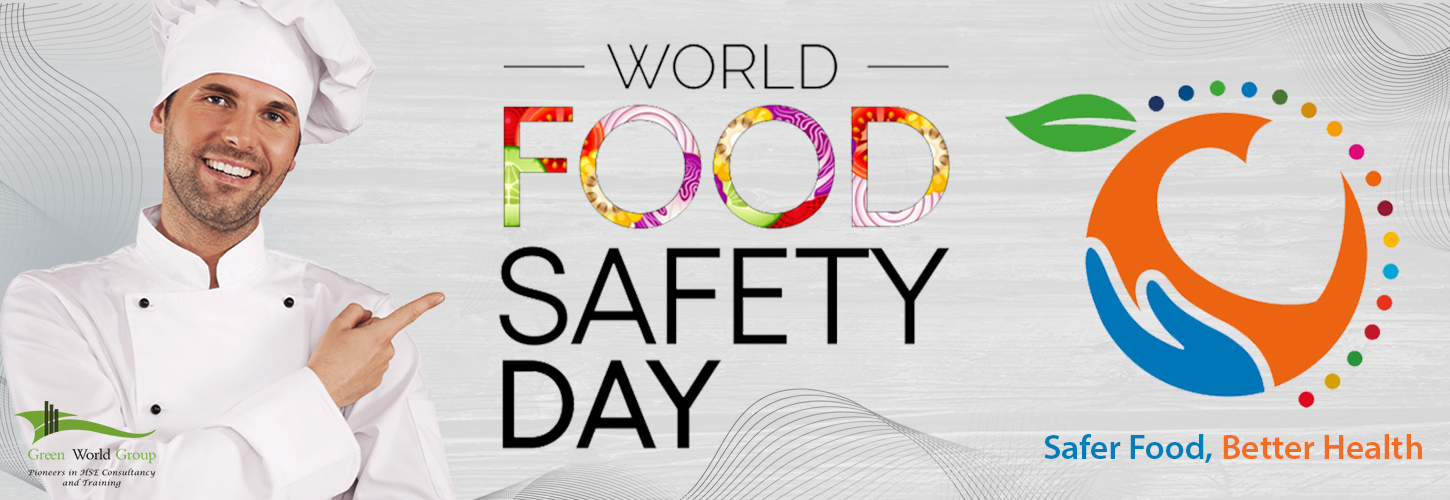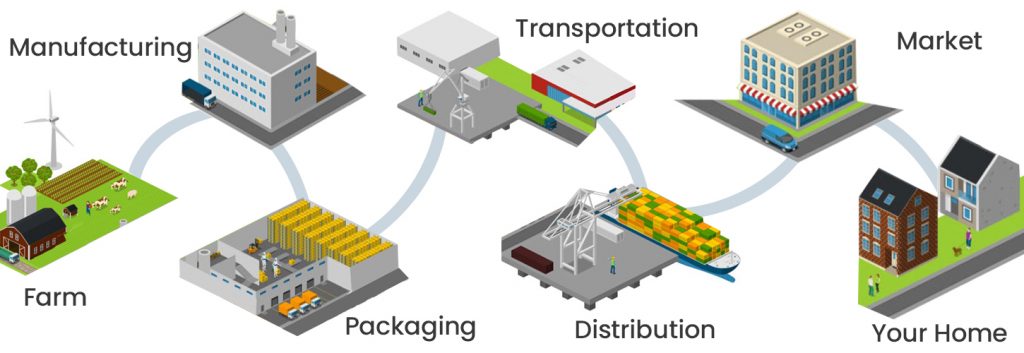
According to the World Health Organization, every year, 1 out of 10 people in the world fall sick due to the consumption of contaminated food. Food contamination is the cause of over 200 diseases, and every year, 48% of the parasitic diseases are transmitted through contaminated food. These figures clearly indicate why we need to take food safety seriously.
For this purpose, 7th June has been designated as WORLD FOOD SAFETY DAY by the UN General Assembly.
This year’s theme for the occasion is “Safer food, better health,” which focuses on raising awareness about food-borne risks and ways to prevent and manage them for a healthier future.
Before looking into ways to keep food safe,
Let us first look into how food gets contaminated at various stage
Production Stage
At the production stage, farm produce can be contaminated due to land contamination by toxic chemicals, and wastes let out by factories, contamination by the use of harmful chemical pesticides and fertilizers.
Animals reared for meat may get infected due to contaminated animal feed and carry microbes harmful to humans.
Due to spillages, industrial and agricultural wastes, domestic sewages, etc., Marine pollution leads to toxins being acquired by fish and other seafood.
Processing Stage
This includes contaminated farm produce by using waste water for washing, milk contamination during the pasteurization stage, cross-contamination of meat in slaughterhouses, unhygienic packaging, and drying produce like fish or fruits in polluted areas unhygienic manufacturing and storage facilities, etc.
Supply or Distribution Stage
When food is supplied from the processing or production location to the customers, restaurants, or other food facilities, contamination occurs in the transport, loading, and unloading stage. For example, an unsuitable transport facility for refrigerated food may lead to the growth of bacteria as a result of higher temperatures. Using unclean trucks or unhygienic food handling, contaminated distribution warehouses, etc., can also cause food contamination.
Preparation Stage
Preparation of food takes place at various places like home kitchens, restaurants, kitchens of institutions like hospitals, schools, hostels, etc., and finally, it also includes street food vendors. Most of the contamination occurs at the preparation stage, where food workers fail to wash hands, use gloves, maintain kitchen hygiene, etc. In the preparation stage, using unwashed utensils, knives, cutting boards, unclean surfaces, cooking in polluted areas like street food, undercooking, storing cooked food for longer periods, and finally, insects or other pests are some of the ways in which food can get contaminated.
Now that we have looked into the various stages at which food can get contaminated, we can say that mishandling of food by multiple people or factors can cause food contamination, making the food unsafe.

This takes us back to WHO’s World Food Safety Day slogan – “Food safety is everyone’s business.” So let us look into how we all can take some steps towards safer food for better health.
Food Safety Tips For Workplaces
Food Safety is essential, especially in restaurants, catering businesses, food processing, storage, manufacturing, and distribution units, as well as other institutions like hospitals, schools, hostels – pretty much any business that handles food.
Here are some ways in which employers, managers as well as food handlers can accomplish food safety in the workplace:
- Formulate policies and procedures for food safety
- Comply with the local or international standards of food safety
- Provide food safety training to all the staff.
- Promote a culture of positive food safety in the workplace by creating awareness.
- Proper monitoring and supervision
- Design facilities at a suitable location and size to prevent food contamination.
- Use of machinery that is cleanable and easy to maintain and sanitize.
- Regular pest control
- Periodic cleaning of the work area with suitable cleaning products.
- Personal hygiene, including regular hand washing with effective techniques and facilities for the same, excluding sick staff, use of suitable protective clothing like overalls, aprons, gloves, hair covers, etc.
- Proper disposal of wastes.
- Maintain suitable temperature control, especially for frozen food products
- Clean and disinfect food transport vehicles.
- Suitable and well-maintained storage facilities
- Regularly wash utensils and equipment.
- Separate raw and cooked food.
Food Safety Tips For Consumers
According to the FDA, any individual can follow the 4 C’s of food safety to help ensure that food is safe for consumption. These 4 C’s are not just for consumers; it is for any individual who handles food.
Cross-Contamination
The following tips can be followed to avoid cross-contamination of food:
- Separate raw food from cooked food at all times.
- Use separate cutting boards for meat and seafood.
- Thoroughly wash utensils that are used for raw food.
- Wash hands with soap and water immediately after handling raw food.
- Use hot water to clean all kitchen surfaces, especially after they are exposed to raw meat, eggs, poultry, seafood, etc.
Cook
The following tips can be followed to avoid cross-contamination of food:
- Since heating kills germs, ensure that food is properly cooked at the right temperature.
- For packaged food or refrigerated food, follow the directions on the label to know the ideal cooking temperature.
- Use a food thermometer to check the inside temperature of the meat to ensure that it is fully cooked.
- Keep food temperature above 140°F between the time after it is cooked to the time it is served.
Clean
The following tips can be followed to avoid cross-contamination of food:
- Use the “Clean as you go” method – that is, clean kitchen surfaces, utensils, cutting boards, knives, etc., after every use.
- Wash hands before and during cooking, especially if you are handling raw meat, seafood, eggs, etc., since they contain microbes.
- Use the right cleaning products and follow the instructions on the label.
- Deep clean your kitchen at least once a month.
Chill
The following tips can be followed to avoid cross-contamination of food:
- Ensure that hot food is cooled down before putting it into the refrigerator, do not piping hot food directly into the refrigerator.
- Follow the 2 hours’ rule – put the food into the fridge within 2 hours of cooking or buying from the store.
- Keep the temperature of your fridge below 40°F to prevent the growth of bacteria.
- Store food by dividing it into small portions or use shallow containers to ensure quick cooling.
“Let us create a world where governments, businesses, managers, food handlers, and all consumers prioritize food hygiene and safety. Because we all know that food is consumed by every human being every day, food safety is crucial for better health and a better future for mankind.
Article written by:
Veldhi Sai, HSE Trainer / Consultant, Green World Group – Dubai